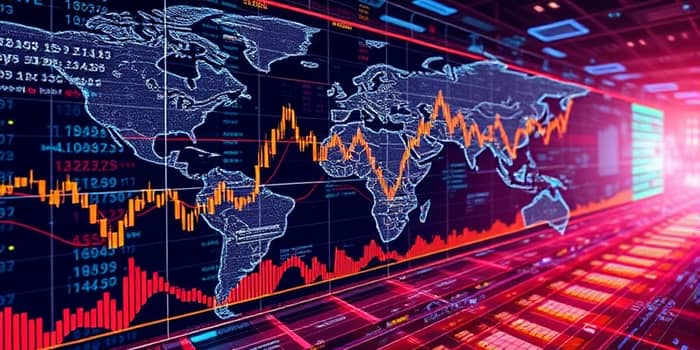
In today’s fast-paced financial world, data is no longer a byproduct of trading—it is the driving force. From institutional giants to individual retail investors, the integration of sophisticated algorithms has redefined how markets operate. This article explores the key dimensions of algorithmic trading, presenting insights that illuminate its transformative power.
Global algorithmic trading market size is projected to soar in the coming decade. Multiple research estimates suggest that it will grow from Estimated USD 57.65 billion in 2025 to over USD 150.36 billion by 2033, reflecting a remarkable compounded annual growth rate.
Regional trends reveal how different markets shape this expansion:
Algorithmic strategies dominate activity in developed markets. In the U.S., 60–75% of trading volume is attributed to automated systems, illustrating their prevalence. Retail participants, once sidelined, are now significant contributors, accounting for roughly 37.5% of volume and growing at a 13.84% CAGR.
Large enterprises remain at the forefront, leveraging their deep resources to refine complex models. By 2025, they represent approximately 56.7% of the market, underscoring the importance of robust research teams and scalable infrastructure.
Advancements in cloud computing, artificial intelligence, and low-latency networks have revolutionized strategy development and execution. Cloud adoption alone is expected to capture 58.8% of deployments by 2025, offering unparalleled scalability.
Algorithmic trading encompasses a diverse set of approaches, each tailored to market conditions and investment goals. Below is a summary of leading strategies:
Algorithmic trading delivers a range of advantages that extend beyond mere speed. Faster execution, reduced latency, and lower transaction costs stem from the automation of manual processes. This precision helps capture fleeting opportunities that humans might miss.
Moreover, automation fosters robust risk management controls, curbing emotional biases. Algorithms can systematically enforce discipline, ensuring adherence to predefined parameters even during periods of market stress.
Diversification and access also improve significantly. Strategies can operate across multiple asset classes—equities, fixed income, commodities, and digital assets—allowing both institutions and retail investors to build broad, balanced portfolios.
Despite its benefits, algorithmic trading presents substantial risks. The rapid pace of orders can amplify volatility and, in extreme cases, trigger market disruptions. Regulators worldwide—including the SEC, FINRA, ESMA, and SEBI—are intensifying oversight to mitigate these dangers.
Key regulatory measures include mandatory registration of algorithmic systems, order-to-trade ratio limits, and real-time surveillance requirements. These safeguards aim to prevent manipulative practices and ensure markets remain fair and transparent.
Competition for speed and data also generates an ongoing technological arms race. Firms must continuously invest in computing power and talent, while maintaining rigorous validation processes to avoid the pitfalls of poor data quality.
The trajectory of algorithmic trading points toward ever-greater integration of AI and emerging data sources. Deep learning models will increasingly drive strategy innovation, incorporating alternative data streams such as satellite imagery, social sentiment, and IoT signals.
Simultaneously, the democratization of trading is gathering momentum. No-code algorithmic tools and accessible cloud platforms are lowering barriers, empowering a new generation of retail investors to deploy sophisticated strategies.
With a continuing CAGR projected in double digits through the 2030s, the algorithmic edge will become more pronounced. As markets evolve and new asset classes emerge—cryptocurrencies, tokenized assets, and ESG-focused instruments—the synergy of data and algorithms will remain central to the next wave of financial innovation.
In conclusion, the fusion of data, technology, and regulatory stewardship is reshaping the trading landscape. By embracing these trends and navigating associated risks responsibly, market participants can harness the full potential of the algorithmic frontier.
References





